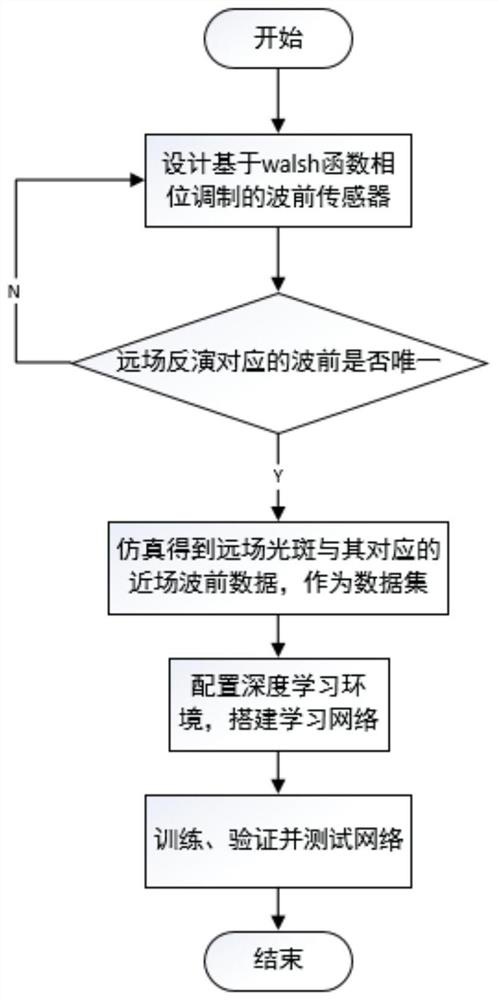Deep learning wavefront restoration method based on single-frame focal plane light intensity image
A deep learning and wavefront restoration technology, applied in neural learning methods, image enhancement, measurement optics, etc., can solve problems such as lack of speed, affecting the accuracy of wavefront restoration, and achieve simple structure, high light energy utilization, and improved computing. The effect of efficiency
- Summary
- Abstract
- Description
- Claims
- Application Information
AI Technical Summary
Problems solved by technology
Method used
Image
Examples
Embodiment Construction
[0040] In order to make the object, technical solution and advantages of the present invention clearer, the present invention will be further described in detail below in conjunction with specific embodiments and with reference to the accompanying drawings.
[0041] figure 1 It is a flow chart of a deep learning wavefront restoration method based on a single-frame focal plane light intensity image. The specific implementation process is:
[0042] Step 1: Design a wavefront sensor based on walsh function phase modulation. After comparing the simulation results, choose the W3 function as the phase plate, as shown in figure 2 Shown is the schematic diagram of the wavefront sensor based on W3 phase plate modulation;
[0043] Step 2: Through the positive and negative defocus wavefronts characterized by Zernike polynomials, verify whether the sensor designed in step 1 can ensure that the far-field spot distribution corresponds to only one wavefront information, that is, the soluti...
PUM
 Login to View More
Login to View More Abstract
Description
Claims
Application Information
 Login to View More
Login to View More - R&D
- Intellectual Property
- Life Sciences
- Materials
- Tech Scout
- Unparalleled Data Quality
- Higher Quality Content
- 60% Fewer Hallucinations
Browse by: Latest US Patents, China's latest patents, Technical Efficacy Thesaurus, Application Domain, Technology Topic, Popular Technical Reports.
© 2025 PatSnap. All rights reserved.Legal|Privacy policy|Modern Slavery Act Transparency Statement|Sitemap|About US| Contact US: help@patsnap.com



